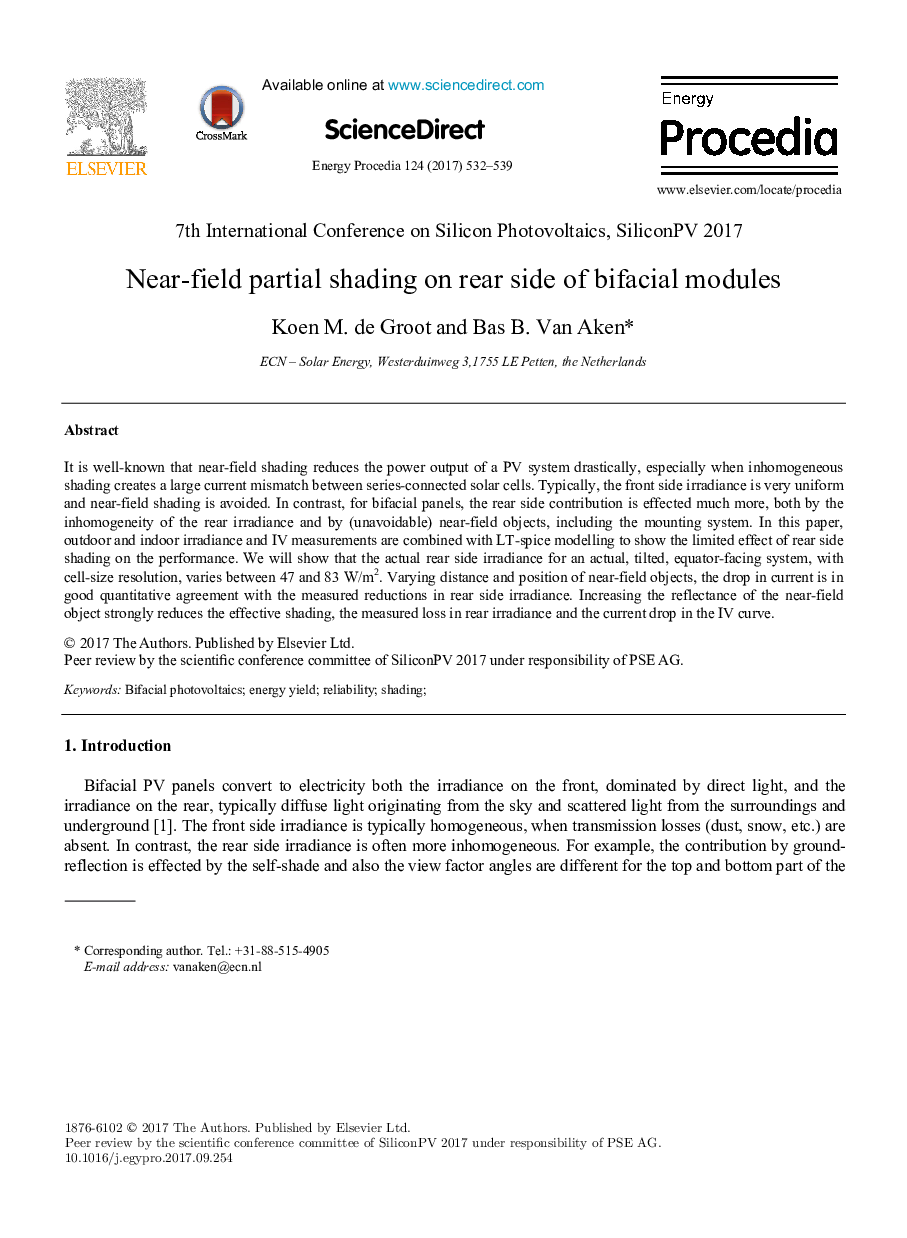| Article ID | Journal | Published Year | Pages | File Type |
|---|---|---|---|---|
| 5444602 | Energy Procedia | 2017 | 8 Pages |
Abstract
It is well-known that near-field shading reduces the power output of a PV system drastically, especially when inhomogeneous shading creates a large current mismatch between series-connected solar cells. Typically, the front side irradiance is very uniform and near-field shading is avoided. In contrast, for bifacial panels, the rear side contribution is effected much more, both by the inhomogeneity of the rear irradiance and by (unavoidable) near-field objects, including the mounting system. In this paper, outdoor and indoor irradiance and IV measurements are combined with LT-spice modelling to show the limited effect of rear side shading on the performance. We will show that the actual rear side irradiance for an actual, tilted, equator-facing system, with cell-size resolution, varies between 47 and 83 W/m2. Varying distance and position of near-field objects, the drop in current is in good quantitative agreement with the measured reductions in rear side irradiance. Increasing the reflectance of the near-field object strongly reduces the effective shading, the measured loss in rear irradiance and the current drop in the IV curve.
Keywords
Related Topics
Physical Sciences and Engineering
Energy
Energy (General)
Authors
Koen M. de Groot, Bas B. Van Aken,
